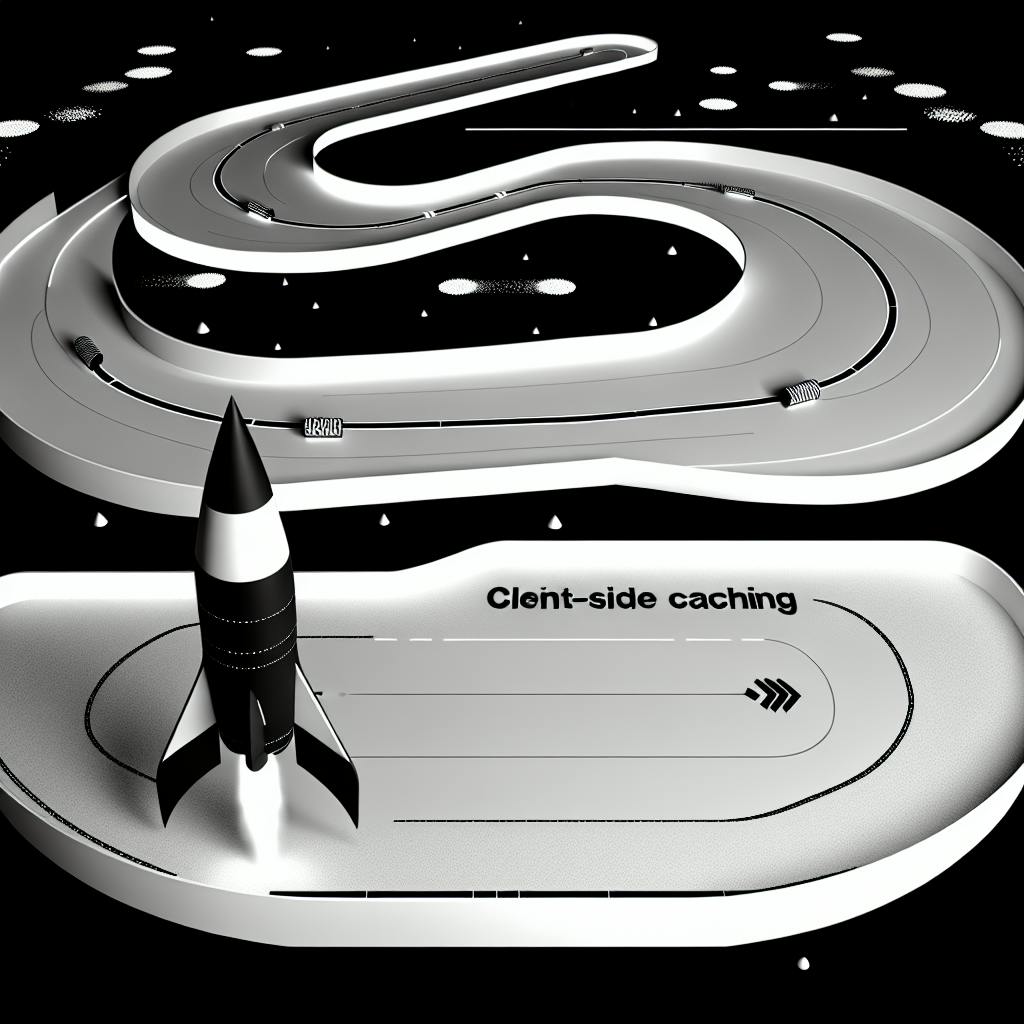Most developers would agree:
Integrating progressive web app (PWA) capabilities into an existing Next.js project can be challenging.
But with the right Next.js PWA boilerplate, you can dramatically streamline front-end workflows and boost performance.
In this post, you'll discover a robust Next.js boilerplate optimized for PWAs. Learn step-by-step techniques for integration along with code walkthroughs, smart performance optimizations, and robust testing strategies to validate smooth, reliable cross-device experiences.
Introducing Next.js PWA Boilerplates
Next.js has excellent support for building progressive web apps (PWAs) right out of the box. By leveraging features like dynamic asset caching, service workers for offline functionality, and server-side rendering for better SEO and performance, Next.js makes it easy to create fast, reliable PWAs.
However, building a production-ready PWA still requires significant configuration. This is where PWA boilerplates for Next.js can save developers time and effort. Rather than configuring PWA capabilities from scratch, developers can use a boilerplate as a starting point.
Why Use a Boilerplate?
Next.js PWA boilerplates provide pre-configured code and tools to jumpstart PWA development. Key benefits include:
- Faster time-to-market: Boilerplates have Next.js PWA features already set up so developers spend less time on initial configuration.
- Best practices: Boilerplates follow proven patterns for performance, scalability, and maintainability.
- Customizability: Developers can easily extend boilerplates by adding features, UI frameworks, etc.
- Updated dependencies: Boilerplates stay up-to-date with the latest Next.js versions and plugins.
In summary, Next.js PWA boilerplates accelerate development by providing an optimized foundation to build upon. Let's explore some top boilerplate options.
Create PWA with Next.js: A Step-by-Step Guide
Next.js offers excellent support for building progressive web apps (PWAs) with features like hybrid rendering, image optimization, and automatic code splitting. By leveraging these capabilities along with additional libraries, developers can create fast, engaging PWAs with offline functionality.
This guide will explore integrating next-pwa, an easy-to-use plugin, to convert a basic Next.js app into a full-fledged PWA. We'll cover key topics like configuring runtime caching for offline support as well as auto-generating manifests and icons.
Next JS PWA Offline: Enhancing User Experience
A key expectation for modern web apps is reliable performance regardless of network conditions. By implementing service workers for runtime caching in Next.js, we can cache assets, API responses, and pages to improve offline capabilities.
The next-pwa plugin handles configuring runtime caching out of the box. We simply define routes and assets to cache like so:
// next.config.js
const withPWA = require('next-pwa')
module.exports = withPWA({
pwa: {
dest: 'public',
runtimeCaching: [
{
urlPattern: /^https?.*/,
handler: 'NetworkFirst',
options: {
cacheName: 'https-calls',
networkTimeoutSeconds: 15,
expiration: {
maxEntries: 150,
maxAgeSeconds: 30 * 24 * 60 * 60,
},
cacheableResponse: {
statuses: [0, 200]
}
}
}
]
}
})
This caches the app shell (JS/CSS bundles) by default and allows us to define additional routes to cache like API calls. By implementing runtime caching, the app can now gracefully handle offline states to prevent failures.
Generating Web App Manifests
To allow users to "install" the PWA like a native app, we need to configure a web app manifest and icons.
The next-pwa plugin can auto-generate these assets for us. We simply provide some metadata in next.config.js:
// next.config.js
module.exports = withPWA({
pwa: {
dest: 'public',
register: true,
skipWaiting: true,
disable: process.env.NODE_ENV === 'development',
manifest: {
name: 'My App',
short_name: 'My App',
description: 'My awesome Next.js PWA!',
background_color: '#ffffff',
theme_color: '#000000',
icons: [
{
src: '/icon-192x192.png',
sizes: '192x192',
type: 'image/png',
},
{
src: '/icon-512x512.png',
sizes: '512x512',
type: 'image/png',
}
]
}
}
})
This will generate a manifest.json file with metadata used when users add to homescreen. It also handles auto-generating various sized icons based on the source images we provide.
By leveraging these features of the next-pwa plugin, we can easily convert our Next.js app into a fully-featured PWA with offline support to provide reliable performance for users. The plugin abstracts away much of complexity, allowing us to focus on building application functionality.
Choosing the Best Next.js Boilerplate
When starting a new Next.js project, one of the most important decisions is choosing the right boilerplate. With the recent release of Next.js 13 and its built-in enhancements for PWAs, performance, and scaling, many developers are eager to leverage the latest capabilities.
In this section, we’ll compare some of the top Next.js PWA boilerplates to help you select the best option for your needs.
Next.js-13 PWA: The Latest Innovations
If you want to build on the latest advancements in Next.js, next-13-pwa is an excellent open source boilerplate to consider. With out-of-the-box PWA support powered by Workbox, automatic runtime caching, and a modular structure optimized for Next.js 13, it offers an advanced foundation for your application.
Some of the key features you get include:
- PWA-focused scaffolding - Next.js 13 added built-in PWA capabilities, which this boilerplate expands on with Workbox for advanced caching strategies. It scores 100 on Lighthouse by default.
- TypeScript - For improved developer experience, next-13-pwa utilizes TypeScript for type safety.
- Modular architecture - Code is structured into domains, making it easier to understand and customize.
- Next.js best practices - Follows conventions and patterns from the Next.js core team for performance and scaling.
- Dark mode support - Styling and components ready for adding dark mode functionality.
For those seeking a robust PWA boilerplate optimized for Next.js 13, next-13-pwa checks all the boxes. The documentation also makes it simple to get started and integrate the components into your app.
Best Next.js Boilerplate: The Contenders
In the Next.js ecosystem there are a few boilerplates that stand out from the crowd for their combination of features, documentation, customizability and project governance.
NextJS Boilerplate has been a popular choice for quickly scaffolding production-ready Next.js apps since 2017. Maintained by a core team of contributors, it bundles utilities like SASS, CSS Modules, TypeScript, ESLint, Prettier, and more into a cohesive starting point.
The boilerplate scores well in terms of performance, SEO, accessibility and best practices. The documentation also covers common use cases for customization. For developers wanting an opinionated set of defaults without needing to make many initial configuration decisions, this boilerplate delivers.
Vercel Next.js Boilerplate is another great option, especially for those deploying to Vercel or wanting close alignment with Next.js core maintainers. It includes the expected configuration for TypeScript, ESLint, Jest, testing utilities and CI/CD integration.
As new releases of Next.js emerge, this boilerplate serves as a reference for updated capabilities and changes. For teams that closely track Next.js versions and want to stay current, it's a smart choice.
Summary
When selecting a Next.js boilerplate, consider your goals around performance, customization needs, project governance, and alignment with Next.js roadmaps. Popular options like next-13-pwa, NextJS Boilerplate and Vercel's official boilerplate each have unique strengths in these areas.
Setting up a modular foundation with the right integrations will pay dividends. Assess your priorities, review documentation for setup and usage, and leverage community maintenance for long-term governance. With the right boilerplate choice, you gain leverage to build amazing Next.js applications.
sbb-itb-5683811
Seamless Integration of Next.js PWA Boilerplate
Integrating a progressive web app (PWA) boilerplate into an existing Next.js project can significantly expedite development. The next-pwa boilerplate offers built-in PWA capabilities like service workers, manifest generation, runtime caching, and more to accelerate building robust offline-first web apps.
This guide will walk through customizing and integrating key elements of next-pwa into your Next.js app.
Tailoring Web Manifests to Your Brand
The boilerplate includes a default public/manifest.json file. This web manifest provides details like the app name, theme colors, icons, and more. Customizing these details is essential for matching your brand.
For example, to update the webapp name, short name, theme color, and background color, modify the manifest as follows:
{
"name": "My App",
"short_name": "MyApp",
"theme_color": "#2196F3",
"background_color": "#fff"
}
The boilerplate supports automatic icon resizing and maskable icons for a polished look across devices. Provide your own high-resolution icon in vector formats like SVG to enable this.
Carefully tailoring these properties is the first step toward a customized, integrated PWA experience.
Next-pwa RuntimeCaching Configuration
The Next.js PWA boilerplate includes a built-in next-pwa plugin for runtime caching powered by Workbox. This caches API responses and static pages for blazing fast performance offline.
Strategically configuring runtime caching is key. For example, to cache items from a /api route for 1 hour and a page like /about indefinitely:
runtimeCaching: [
{
urlPattern: /^https?.*/,
handler: 'NetworkFirst',
options: {
cacheName: 'https-calls',
networkTimeoutSeconds: 15,
expiration: {
maxEntries: 150,
maxAgeSeconds: 60 * 60 * 24, // 1 day
},
cacheableResponse: {
statuses: [0, 200],
},
},
},
{
urlPattern: '/api/',
handler: 'StaleWhileRevalidate',
options: {
cacheName: 'api-calls',
expiration: {
maxEntries: 128,
maxAgeSeconds: 60 * 60, // 1 hour
},
},
},
{
urlPattern: '/about',
handler: 'CacheFirst',
options: {
cacheName: 'cached-pages',
expiration: {
maxEntries: 32,
maxAgeSeconds: 60 * 60 * 24 * 365, // 1 year
},
},
}
]
This configures caching for API calls, the /about page, and a global catch-all for other page routes. Tweaking these expiration times and limits based on traffic patterns optimizes offline usability.
With manifest customization and intelligent runtime caching in place, integrating any Next.js PWA boilerplate into existing apps is straightforward and rewarding. The result is a blazing fast, offline-capable progressive web app tailored to your brand and use cases. Give it a try today!
Optimizing Next.js PWA Performance
Performance optimization is crucial for Next.js progressive web apps (PWAs) to provide a great user experience. Here are some tips for improving site speed, optimizing bundles, and monitoring performance.
Implementing Lazy Loading for Efficiency
Lazy loading with dynamic imports allows you to defer non-critical React components until the user needs them. This avoids loading unnecessary code upfront, improving start-up time.
Here's an example using next/dynamic:
import dynamic from 'next/dynamic'
const Analytics = dynamic(() => import('../components/Analytics'), {
ssr: false
})
export default () => (
<div>
<Header />
<Analytics />
<Footer />
</div>
)
The Analytics component won't load until explicitly rendered. This chunks the bundle and loads it on-demand.
Other tips:
- Lazy load below-the-fold content
- Defer third-party scripts
- Load critical CSS eagerly
Following these best practices minimizes the initial payload size.
Smart Code Splitting Strategies
Next.js supports code splitting automatically. But you can optimize it further for your Next.js PWA.
Some ideas:
- Split vendor code into a separate chunk
- Dynamically import page components
- Load language packs on-demand
This reduces unnecessary duplication across bundles.
Here's an example leveraging getStaticProps and dynamic:
export async function getStaticProps() {
const posts = import('./posts')
return {
props: {
posts
}
}
}
export default ({ posts }) => {
const Posts = dynamic(() => posts, {
ssr: false
})
return (
<>
<header />
<Posts />
</>
)
}
The posts are split into a separate bundle chunk, avoiding duplication.
Following smart code splitting principles optimizes your bundle split points for maximum caching efficiency. This speeds up load times significantly.
By implementing lazy loading and smart code splitting, you can optimize Next.js PWAs to provide lightning-fast experiences. Carefully planned splitting strategies can minimize payload sizes for improved performance.
Robust Testing and Deployment Strategies for Next.js PWAs
Guidelines for testing PWA functionality locally and deploying to production with confidence.
Simulating Mobile Devices for Thorough Testing
Using Chrome DevTools to simulate mobile devices and test responsive design.
When building a progressive web app (PWA) with Next.js, it is crucial to test how your app performs on real mobile devices during development. However, constantly testing on physical devices can be tedious and time-consuming.
Fortunately, Chrome DevTools provides device mode simulation to help test responsive design and PWA functionality more easily. Here are some tips for leveraging device mode:
- Open DevTools in Chrome and toggle the device toolbar using the tablet icon. This allows you to select predefined device sizes like iPhone X or Pixel 5.
- Use the responsive view to resize across breakpoints and ensure UI adapts correctly. Drag the handles to customize exact sizes.
- Throttle network speed to 3G/4G/offline to simulate real mobile network conditions. This is key for validating caching and offline behavior.
- Toggle device user agent so site identifies request coming from actual mobile devices.
- Use media queries to build conditional CSS/UI based on screen widths. Test each breakpoint looks correct.
- Check all interactions like tapping buttons work correctly. Scrolling, zooming, etc should match native app feel.
Leveraging device mode throughout development catches responsive issues early and ensures PWAs work flawlessly when users install them to their homescreens. Be sure to test on physical devices as well before launch. But DevTools simulation streamlines constant iterations during build.
Validating Web Vitals for Optimized Performance
Measuring site performance using Lighthouse audits to ensure optimal user experience.
For PWAs to qualify as installable, they must provide an app-like experience with fast loading, reliable interactivity, and smooth visual stability. Google proposes web vitals to measure these aspects. When building a Next JS PWA, running regular Lighthouse audits and monitoring vitals ensures optimal UX.
Here are some tips for validating web vitals during development:
- Test on representative device hardware - underpowered machines punish performance. Throttle CPU/Network in DevTools.
- Audit with Lighthouse in device mode for accurate mobile scores. Failures pinpoint optimization areas.
- Track Largest Contentful Paint - measures loading perceived speed. Target under 2.5 seconds.
- Monitor First Input Delay - track interactivity responsiveness. Target under 100ms.
- Validate Cumulative Layout Shift - quantify visual stability. Target 0.1 or lower.
Optimizing your Next.js app to consistently pass Lighthouse audits and web vitals benchmarks ensures your PWA delivers app-quality user experiences worthy of being installed on user home screens.
Be sure to measure from real mobile devices on average networks prior to launch. But leverage Chrome DevTools and Lighthouse throughout development to catch performance issues early. Delivering app-like speed and fluidity is what sets PWAs apart from traditional websites.
Key Takeaways: Building Successful Next.js PWAs
Next.js offers built-in PWA capabilities that make it easy to build fast, reliable, and engaging progressive web apps. By leveraging features like server-side rendering, optimized caching, and smaller bundle sizes, developers can quickly launch performant PWAs with Next.js.
Here are the key takeaways for building successful Next.js PWAs:
Seamless Offline Support
The Next.js PWA plugin enables powerful features like offline page caching using service workers and web manifest creation. This allows your app to reliably function even when users have intermittent connectivity. Strategically caching page routes, static assets, and API responses is crucial.
Immersive Mobile Experience
Next.js PWAs are designed to feel native on mobile devices, with features like fast loading, add to homescreen, and fullscreen support. Configuring an app manifest and icon allows you to brand the experience. Testing on various devices helps polish rough edges.
Easy Data Caching
Stale while revalidate and incremental static regeneration provide built-in caching and revalidation methods in Next.js. This prevents outdated data by proactively regenerating pages at intervals. Other caching strategies like runtime caching of API requests also help.
By focusing on these areas, developers can build super-fast, reliable, and engaging Next.js PWAs that delight users. Check the Next.js docs for more PWA guidance.


